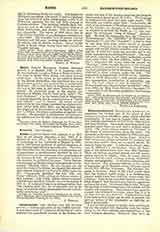

Kaiserchronik (DER KEISER UND DER KUNIGE BUOCH), a German epic poem of the twelfth century. It is at once a kind of “Legend of all the Saints” and a confused but remarkable account of the Roman emperors and also of the German emperors and kings to the crusade of King Conrad III (1147). The language is comparatively good and often quite poetic. The chronicle was written about 1150. Undoubtedly the work of an ecclesiastic of Ratisbon, an earnest partisan of the Guelphs, the chronicle is not improbably to be referred to Konrad der Pfaffe (q.v.), who composed the well-known “Song of Roland” (Rolandslied). He drew his information from the “Chronicon Wirzeburgense”, the “Chronicle” of Ekkehard (see Ekkehard IV), and the “Annolied”; it may be that he also drew from some earlier record or rhymed chronicle. Judging from the large number of manuscripts still extant (twelve complete and seventeen partial), it must have been very popular, and it was twice continued in the thirteenth century. The original poem, according to the latest authorities, ended with verse 17283; the first addition, called “Bavarian”, comprised 800 verses, while the second, the “Swabian”, which brought the poem to the Interregnum (1254-73), consisted of 483 lines. The chronicle was first published in full by Massmann (Quedlinburg, 1849-54) in three volumes, under the title: “Die sogenannte Kaiserchronik, Gedicht des 12. Jahrhunderts in 18578 Reimzeilen”, with careful researches into manuscripts, investigation of authorship, age, etc. The best edition is that of Schroder: “Die Kaiserchronik eines Regensburger Geistlichen” (Hanover, 1892), in “Mon. Germ. Deutsche Chroniken”, I, i; Appendix i is the Bavarian, appendix ii the Swabian continuation.
PATRICIUS SCHLAGER

